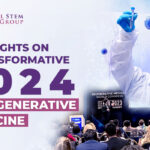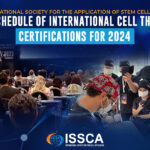Where do adult stem cells come from?
Adult stem cells receive much interest in the scientific community thanks to their ability to self-renew and generate numerous types of cells and tissues. There are two categories of stem cells: embryonic and adult.
Unlike embryonic stem cells, which have the ability to differentiate into more than one cell type, most adult stem cells are capable of forming only the types of tissue from which they originated. However, due to the controversy surrounding embryonic stem cell use, more and more researchers have turned their attention to the study of adult stem cells.
As a result, we now know of several adult tissues that serve as sources for stem cells. This is great news for people who suffer from degenerative conditions like osteoarthritis, muscular dystrophy and even Alzheimer’s disease.
The list of adult tissues known to contain stem cells keeps growing, and it includes bone marrow, brain tissue, peripheral blood and blood vessel tissue, skeletal muscle tissue, and liver and pancreas tissue.
Adult stem cells can be obtained from multiple tissues
Neural brain cells (NSCs) are multipotent cells that generate the central nervous system. They undergo asymmetric cell division, resulting in one non-specialized (blank) cell and one specialized cell. Japanese researchers have been able to use NSCs to replace dying neurons in lab mice [1]. Currently there are numerous ongoing investigations into the response of NSCs in multiple sclerosis (MS) and Parkinson’s disease patients. The results may have future applications in the treatment of additional neurological conditions.
Hematopoietic stem cells (HSCs) are stem cells harvested from blood or bone marrow. They can differentiate into variety of specialized cells, such as white blood cells, which fight infection, and red blood cells, which carry hydrogen and platelets, and are responsible for blood clotting.
The downside of HSC stem cells is that their ratio in bone marrow is very low—1 in every 10,000-15,000 cells, which slows down the harvesting process considerably. Bone marrow also hosts skeletal stem cells (STCs), which give rise to osteoblasts (bone cells), cartilage and hematopoietic stroma.
An interesting niche of stem cells is found in the surface lining of the small and large intestines (ISCs). These stem cells divide continuously throughout life and are believed to be the source of most forms of cancer of the small intestine and colon. The longevity and renewal rates of ISCs becomes problematic in colorectal cancer, because they promote regeneration of the tumor after therapy.
In healthy adults, the liver is responsible for maintaining the balance between cell gain and cell loss. The liver’s impressive regenerative functions are attributed to hepatocytes, which are believed to be the adult stem cells of the liver. When the liver tears apart from virus infections, inflammation or is sectioned through hepatectomy, hepatocytes activate a stem cell-like behavior, giving rise to new tissue, replacing the lost liver cells.
Another important discovery has been made by Dr. Lola Reid of the University of North Carolina, an accredited expert in the research of liver development [2]. As it turns out, the biliary tree, a network of vessels that connect the liver and pancreas to the intestine, generates a special type of adult stem cells, their major characteristic being pancreatic precursor cells, meaning they are destined to differentiate as pancreatic cells.
In a series of lab tests, these biliary cells have been manipulated to become islets, structures responsible for the production of insulin and c-peptide, a key component in the natural production of insulin. As a result, the blood sugar control in has been found to increased dramatically in lab mice. Dr. Reid hopes that her team’s efforts will speed up the process of finding a cure for diabetes.
Over the past few decades, scientific research has provided us with great insight on adult stem cells and their applications in regenerative medicine.
Unlike embryonic stem cells, adult stem cells can be isolated from a variety of adult tissue, including the brain, bone marrow, peripheral blood and even tumor-derived tissue cells, allowing scientists to avoid the ethical dilemma of using embryonic stem cells entirely. The risk of rejection with adult stem cells is considerably lower (the donor is usually the patient himself), and the differentiation rates are higher, providing much hope for future research to find cures for degenerative conditions in humans.
REFERENCES:
[1] MacKlis, Jeffrey D.; Magavi, Sanjay S.; Leavitt, Blair R. (2000). “Induction of neurogenesis in the neocortex of adult mice”. Nature 405 (6789): 951–5[2] Biliary Tree Stem Cells, Precursors to Pancreatic Committed Progenitors: Evidence for Possible Life-long Pancreatic Organogenesis – http://www.diabetesresearch.org/file/research-publications/2013-Stem-Cells_Biliary-Tree-Stem-Cells-to-Islets.pdf







